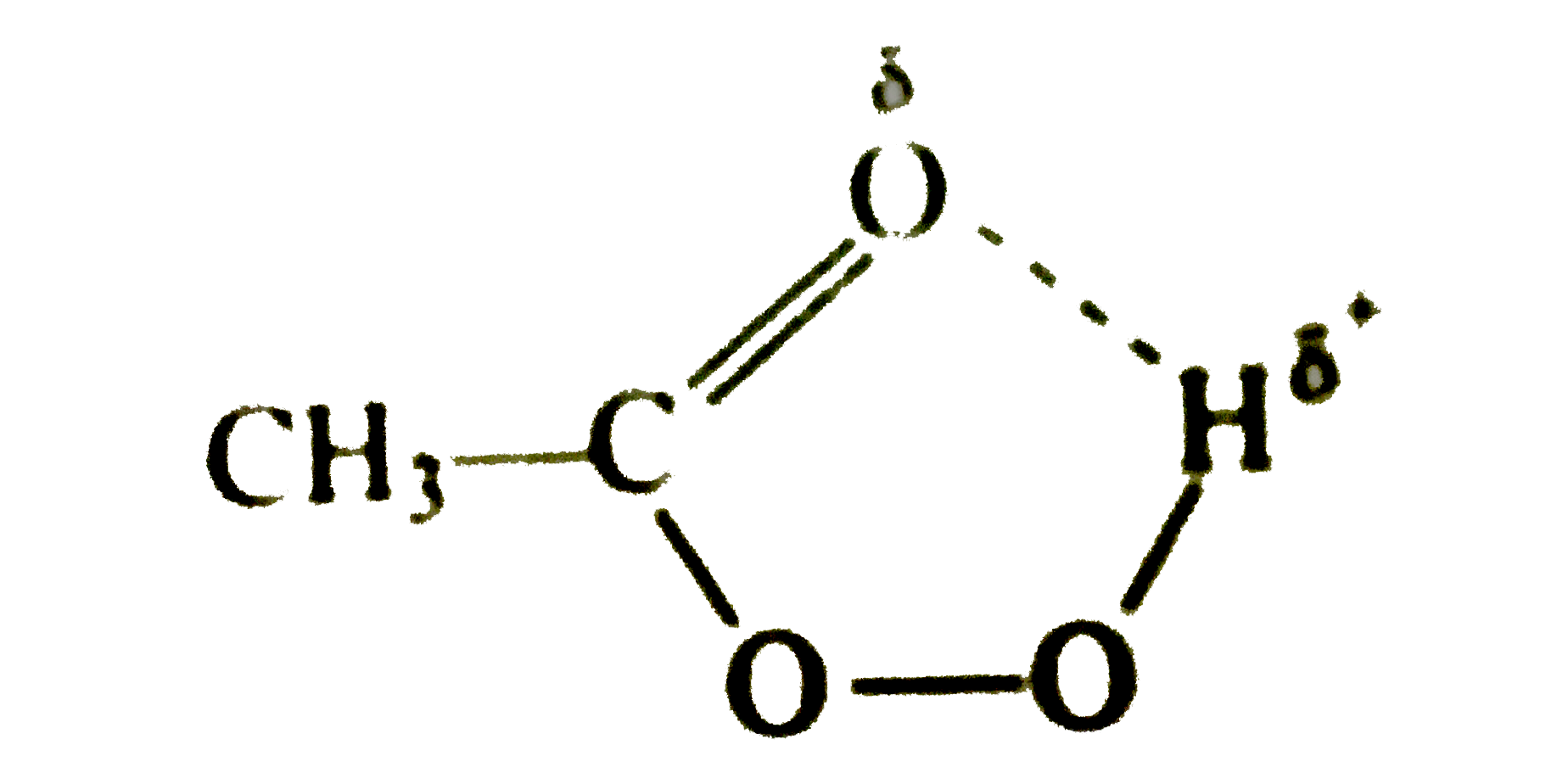Intermolecular hydrogen bonding increases the enthalpy of a liquid due to the :
decrease in the attraction between molecules
increase in the attraction between molecules
decrease in the molar mass of unassociated liquid molecules
increase in the effective molar mass of hydrogen-bonded molecules
The correct Answer is:B
As attractive forces ↑, enthalpy of a liquid ↑.
Topper's Solved these Questions
- BOOK - GRB PUBLICATIONCHAPTER - CHEMICAL BONDING-IEXERCISE - H. Oxyacids, Naming of Inorganic Compounds, Important Structures61videos
CHEMICAL BONDING-I
- BOOK - GRB PUBLICATIONCHAPTER - CHEMICAL BONDING-IEXERCISE - I. Allotropy13videos
CHEMICAL BONDING-I
- BOOK - GRB PUBLICATIONCHAPTER - CHEMICAL BONDING-IEXERCISE - F.Resoncance29videos
CHEMICAL BONDING-I
- BOOK - GRB PUBLICATIONCHAPTER - CARBOXYLIC ACID AND DERIVATIVES, AMINES AND OTHER NITROGEN COMPOUNDSEXERCISE - Subjective type19videos
CARBOXYLIC ACID AND DERIVATIVES, AMINES AND OTHER NITROGEN COMPOUNDS
- BOOK - GRB PUBLICATIONCHAPTER - CHEMICAL KINETICSEXERCISE - Subjective Type63videos
CHEMICAL KINETICS
Similar Questions
Knowledge Check
- Question 1 - Select One
Intermolecular hydrogen bonding is strongest in
AHCHOBCH3OHCC6H5OHDCH3NH2 - Question 2 - Select One
Intermolecular hydrogen bonding is strongest in
AHCHOBCH3OHCC6H5OHDCH3NH2 - Question 3 - Select One
Intermolecular hydrogen bonding is strongest in
AMethylamineBPheno1CFormaldehydeDMethano1
Intermolecular hydrogen bonding is strongest in
View SolutionIntramolecular H-bonding is present in
View SolutionIntermolecular H-bonding in HF makes it :
View SolutionThe hydrogen bond is an electrostatic attractive force between covalently bonded hydrogen atom of one molecule and an electronegative atom like (F,O,N) of other molecule. Hydrogen bond is nearly an electrostatic attractive force and not a normal chemical bond. It is very weak (2-10 kcal/mol) as compared to a colvent bond (strength 50-100 kcal/mol). In intramolecular hydrogen bonding, the two or more than two molecules of the same or different substances are linked to form polymeric aggregate. Intermolecular hydrogen bonding increases the boiling point of the compound and also its solubility in water. Intramolecular hydrogen bonding occurs within two atoms of the same molecule. Intramolecular hydrogen bonding is also called chelation, since it involves ring formation. intramolecular hydrogen bonding decreases the boiling point of the compound and also its solubility in water.
Select the compound which involves intramolecular hydrogen bonding.
 View Solution
View SolutionThe hydrogen bond is an electrostatic attractive force between covalently bonded hydrogen atom of one molecule and an electronegative atom like (F,O,N) of other molecule. Hydrogen bond is nearly an electrostatic attractive force and not a normal chemical bond. It is very weak (2-10 kcal/mol) as compared to a colvent bond (strength 50-100 kcal/mol). In intramolecular hydrogen bonding, the two or more than two molecules of the same or different substances are linked to form polymeric aggregate. Intermolecular hydrogen bonding increases the boiling point of the compound and also its solubility in water. Intramolecular hydrogen bonding occurs within two atoms of the same molecule. Intramolecular hydrogen bonding is also called chelation, since it involves ring formation. intramolecular hydrogen bonding decreases the boiling point of the compound and also its solubility in water.
Which of the following compounds is (are) stabilised by intramolecular hydrogen bonding?View Solution

